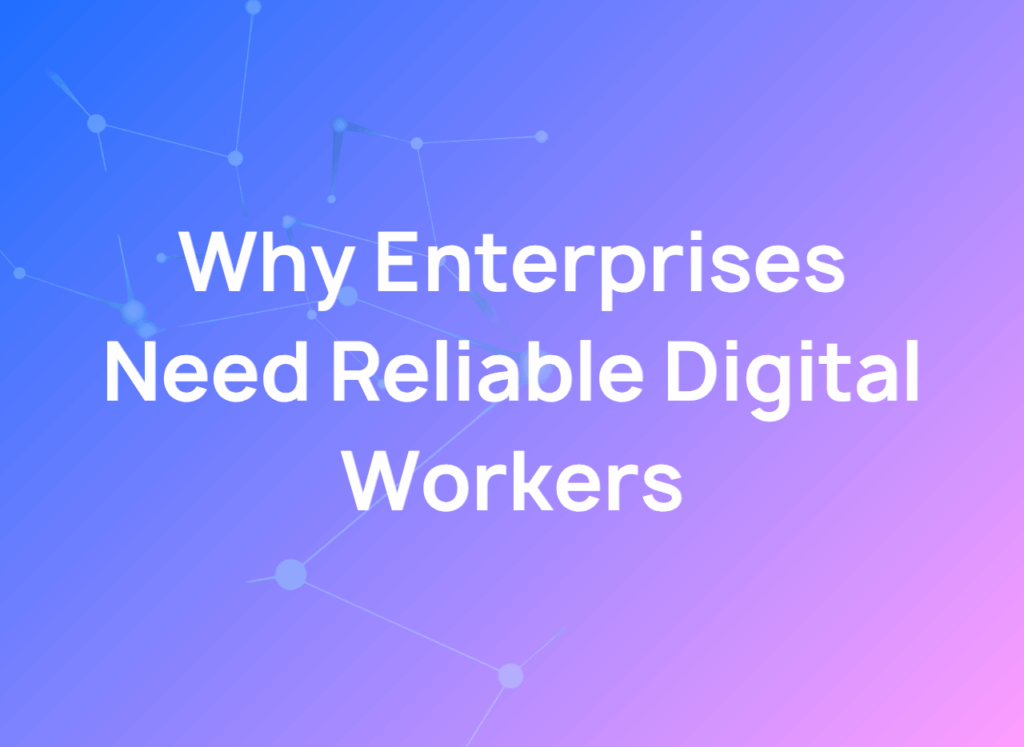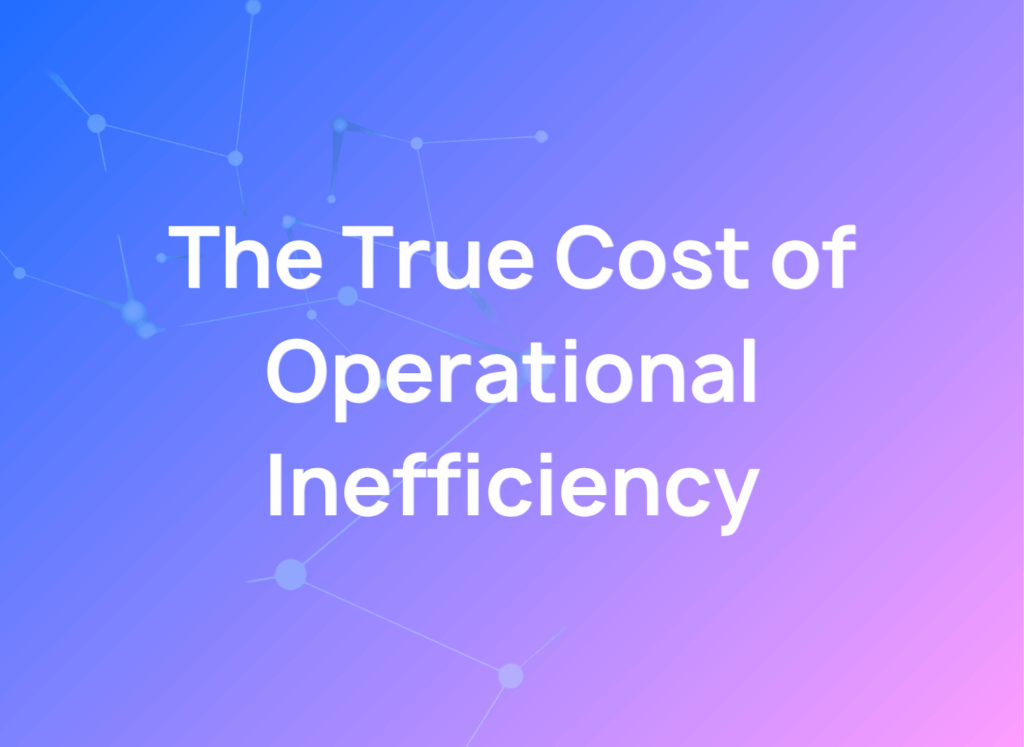How to Reduce Operational Costs by 20% Without Layoffs
How to Reduce Operational Costs by 20% Without Layoffs
The era of scaling by hiring is over. Operations executives now face an impossible equation: cut costs dramatically while maintaining performance, accelerate growth without expanding headcount, and deliver results faster than ever before.
The solution isn't more consultants, more tools, or more people. It's Digital Labor—custom AI workers that execute your operational workflows autonomously, delivering the 20% cost reduction you need without sacrificing a single job.
The New Reality: Why Traditional Cost-Cutting Fails
Operations leaders are trapped in a cycle of diminishing returns. 47% of executives cite economic uncertainty as their biggest concern, while 32% of mid-sized businesses need additional financial support to navigate 2025. The pressure to reduce operational costs by 20% isn't just about efficiency—it's about survival.
Traditional approaches create more problems than they solve:
- Hiring freezes slow growth and overburden existing teams
- Tool consolidation often reduces capabilities without meaningful savings
- Process cuts eliminate essential functions that drive revenue
- Outsourcing creates dependencies and reduces control
The real challenge isn't finding areas to cut—it's finding ways to maintain operational excellence while dramatically reducing costs. This requires a fundamentally different approach to work itself.
Digital Labor: The New Operating Model
Digital Labor represents a paradigm shift in how organizations scale. Instead of hiring more people or buying more software, you deploy purpose-built AI workers that automate foundational operational and analytical processes.
These aren't chatbots or simple automation tools. Digital Workers are custom-built AI agents that understand your specific workflows, integrate with your existing systems, and deliver outcomes autonomously. They work quietly in the background, handling everything from data consolidation to complex analysis, freeing your team to focus on strategic initiatives.
The transformation is immediate and measurable. Companies implementing Digital Labor typically see:
- Elimination of tool sprawl by consolidating multiple software licenses into intelligent workers
- Reduced consulting fees by bringing capabilities in-house
- Avoided new hires through automated execution of manual processes
- Faster decision-making with real-time insights and analysis
The Cost Optimization Benefits of Digital Labor
Eliminate Tool Sprawl and License Costs
Most organizations suffer from software bloat—multiple tools that barely integrate, each requiring separate licenses, training, and maintenance. Digital Workers consolidate these functions into intelligent agents that deliver better outcomes at a fraction of the cost.
Instead of paying for five different analytics tools, reporting platforms, and automation software, you get custom AI workers that handle all these functions seamlessly. The cost savings are immediate and compound over time.
Avoid New Hires Without Sacrificing Growth
Digital Workers handle the foundational work that typically requires new hires. They process invoices, consolidate spreadsheets, prepare reports, clean data, and execute workflows—all the manual tasks that consume your team's time and require additional headcount as you scale.
This isn't about replacing existing employees. It's about avoiding the need for new hires while enabling your current team to focus on high-value work that drives growth.
Reduce Consulting and Outsourcing Dependencies
Many organizations rely on expensive consultants or outsourcing partners for specialized work. Digital Workers bring these capabilities in-house, delivering expert-level execution without the ongoing fees.
causaLens customers often eliminate millions in consulting costs by deploying AI workers that handle complex analytical workflows, process optimization, and strategic analysis that previously required external expertise.
Automate Manual, Repeatable Tasks
The biggest cost drain in most organizations is manual work—repetitive tasks that consume hours of employee time but add little strategic value. Digital Workers excel at automating these processes, delivering consistent results without human intervention.
From data entry to report generation, workflow coordination to performance monitoring, Digital Workers handle the operational foundation that keeps your business running while your team focuses on growth initiatives.
Implementing Digital Labor: A Step-by-Step Guide
Step 1: Identify High-Impact Automation Opportunities
Start by mapping your operational workflows to identify where Digital Workers can deliver immediate value. Focus on:
- Repetitive data processing that consumes significant employee time
- Manual reporting that delays decision-making
- Workflow coordination that requires constant oversight
- Analysis tasks that follow predictable patterns
The goal isn't to automate everything—it's to eliminate the manual work that prevents your team from focusing on strategic initiatives.
Step 2: Deploy Digital Workers for Foundational Tasks
Begin with Digital Workers that handle your most time-consuming operational processes. These AI agents integrate with your existing systems, learn your specific workflows, and begin executing tasks autonomously.
Unlike traditional automation tools, Digital Workers adapt to changes in your processes, handle exceptions intelligently, and scale with your business needs. They work within your current infrastructure without requiring system overhauls or extensive training.
Step 3: Scale to Complex Analytical Workflows
Once foundational processes are automated, expand Digital Workers to handle complex analytical tasks. These AI agents can perform root cause analysis, demand forecasting, campaign analytics, and strategic planning—work that previously required specialized expertise or external consultants.
The key is scalability. As your business grows, Digital Workers grow with you, handling increased complexity without proportional increases in cost or headcount.
Step 4: Integrate with Existing Systems and KPIs
Digital Workers integrate seamlessly with your current technology stack, working within your existing ERP, CRM, and analytics platforms. They respect your data governance policies, maintain audit trails, and deliver results in the formats your team already uses.
This integration ensures that cost savings don't come at the expense of operational continuity or system reliability.
Real-World Results: Cost Optimization in Action
Why AI Agents are the Future of Healthcare Strategy
AI agents are revolutionizing healthcare by replacing dashboards and intuition with precision-driven decision-making. At Syneos Health, AI agents built on the causaLens platform are transforming pharmaceutical engagement. These autonomous agents provide causal reasoning and actionable insights in minutes, helping teams identify the best strategies to target healthcare providers (HCPs), allocate resources, and personalize outreach effectively.
This shift enables faster go-to-market strategies, smarter targeting, and scalable personalization, addressing the complexity of multi-touch engagement in pharma. Beyond pharma, this model has implications for any industry requiring high-complexity decision-making, proving that AI agents are no longer co-pilots—they’re essential coworkers..
Pharmaceuticals: Scaling Decision-Making with AI Agents
Johnson & Johnson Innovative Medicine is leveraging causaLens AI Agents to transform decision-making in pharmaceutical manufacturing. In an industry where precision and speed are critical, AI Agents are helping J&J reduce the time for root cause analysis from a month to a single day—saving time for patients and improving ROI. By automating repeatable workflows and standardizing data science processes, J&J is embedding scalable decision-making into its manufacturing infrastructure, paving the way for faster interventions, fewer repeated investigations, and broader reuse of institutional knowledge.
Addressing Implementation Concerns
Data Security and Compliance
Digital Workers are built with enterprise-grade security from the ground up. They operate within your existing security framework, maintain compliance with regulations like ISO-27001, HIPAA, and SOC-2, and provide full audit trails for all activities.
Unlike external consultants or outsourcing partners, Digital Workers keep your data within your controlled environment while delivering expert-level capabilities.
Integration Complexity
Digital Workers are designed to work within your existing systems without requiring major technology overhauls. They integrate through standard APIs, respect your data governance policies, and operate within your current infrastructure.
The implementation process is managed by causaLens experts who ensure smooth deployment without disrupting your ongoing operations.
Change Management
Digital Workers complement your existing team rather than replacing them. They handle the manual, repetitive tasks that drain productivity, allowing your employees to focus on strategic work that drives growth.
This approach actually improves job satisfaction by eliminating mundane work while creating opportunities for employees to develop higher-value skills.
The Strategic Advantage of Digital Labor
Digital Labor isn't just about cost reduction—it's about creating a sustainable competitive advantage. Organizations that deploy Digital Workers gain:
- Faster decision-making through real-time analysis and insights
- Improved accuracy by eliminating human error in routine tasks
- Enhanced scalability without proportional increases in costs
- Greater agility to respond to market changes and opportunities
The cost savings are immediate, but the strategic benefits compound over time. As your Digital Workers learn and improve, they become increasingly valuable assets that drive competitive advantage.
Transform Your Cost Structure Today
The choice is clear: continue the unsustainable cycle of hiring more people and buying more tools, or embrace the new operating model that delivers better outcomes at lower costs.
Digital Labor offers a guaranteed path to the 20% cost reduction you need without sacrificing operational excellence or employee satisfaction. Companies implementing this approach typically achieve ROI of 500% or more through eliminated software costs, avoided hiring, and reduced consulting fees.
The transformation starts with a single Digital Worker handling your most time-consuming operational process. From there, you can scale to automate entire workflows, eliminate tool sprawl, and build the lean, efficient operation that drives sustainable growth.
Your competitors are already exploring Digital Labor. The question isn't whether this transformation will happen—it's whether you'll lead it or be left behind.
Ready to discover how Digital Labor can transform your operations? Connect with causaLens to explore custom Digital Workers built for your specific business needs.
Digital Labor Transforms Your Operations
Custom Digital Workers built for your use cases, by us.





